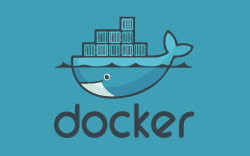The ins and outs of Docker

With businesses growing increasingly fast and mobile, many are exploring enterprise virtualization technologies as they embrace the cloud. Containers are a tool currently seeing growth in uptake, with organizations taking advantage of the ability to develop and deploy a variety of applications with incredible efficiency.
Docker, an open source project, is helping drive the Linux Container technology forward, with a range of organizations putting containers to use. Docker may seem like a complex concept for the uninitiated. So, to help demystify, here is a breakdown of what exactly Docker is - and why we expect more and more organizations to use Linux Containers in the near future.
What is Docker?
In the simplest terms, Docker enables users to ship and run applications exactly as was designed and tested by the developers. This is done by packaging all the required libraries and other dependencies. Staying true to the essence of what a traditional 'container' entails, Linux containers let developers manage and deploy applications in discrete, contained environments, making it much simpler to keep a handle on a number of applications.
Containers are commonly referred to as a form of 'lightweight virtualization', which lets you to detach your enterprise applications from the physical infrastructure on which it is based. This means that you can run multiple containers off the same host. The speed, efficiency and ease of management offered by container technologies such as Docker are the main factors behind their appeal.
Outwardly, Docker containers seem to behave like the traditional virtual machines (VMs), but there are subtle differences.
A key difference between containers and traditional VMs lie in the lightweight nature of containers. Applications running within VMs would include the application itself as well as the required dependencies (such as binaries and libraries) AND a guest operating system. The guest operating system alone would substantially increase the size of the application deployed.
Compare that with containerized applications that has the application itself along with its required dependencies - with the shared host operating system playing the role of a traditional hypervisor needed with VMs. The end result is the ability to partition and isolate applications, exactly as one would with a VM, but minus the extra overhead of a dedicated guest operating system for each VM.
Why should my enterprise use containers?
Is the container technology ready to hit the big time? As some of the biggest service providers brands around the world have shown, the container technology can be used in a wide range of use cases across a variety of industries.
Take Spotify, for instance. The online music streaming giant caters to more than 40 million users around the world, with 5,000 separate servers crucial to its operations. With such heavy demand, ensuring the service is constantly up and running is critical.
That was largely the reason Spotify turned to the Docker project, which is being used across all its servers - enabling it to contain errors as they arise and quickly find a solution that enabling an uninterrupted service and experience to their users.
With Spotify as one example of a household name exploring the benefits of containers and Docker, how many more are likely to follow suit in the near future?
Why don't you take a quick guided tour of Docker at: https://www.docker.com/tryit/ or get started with Docker Containers with an evaluation download of Red Hat Enterprise Linux 7?